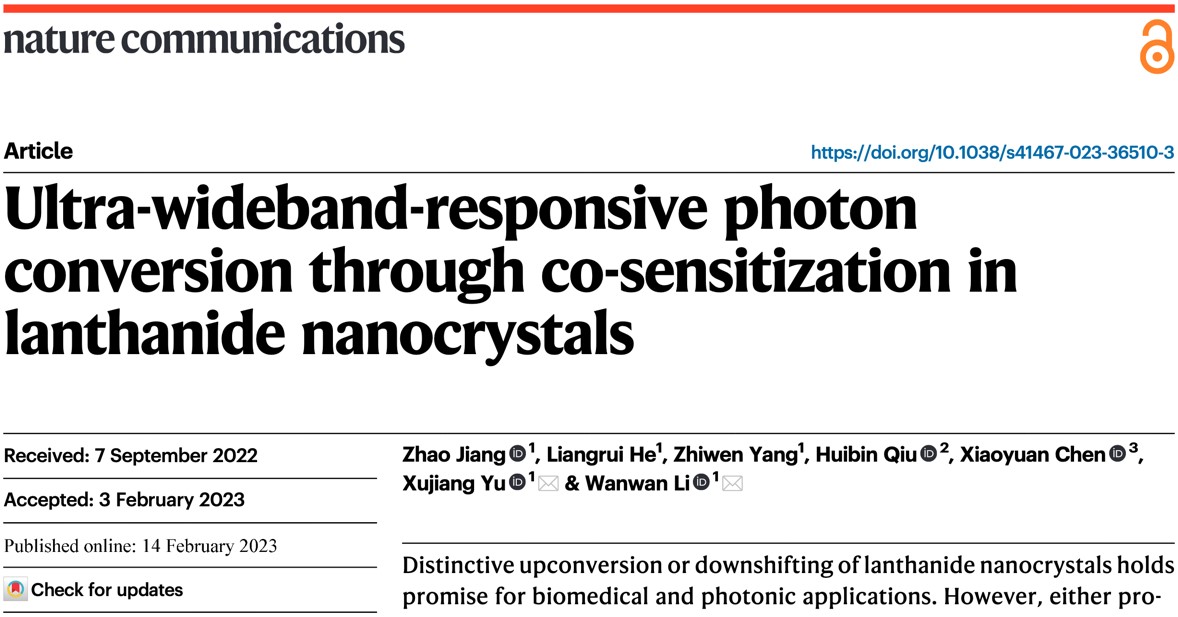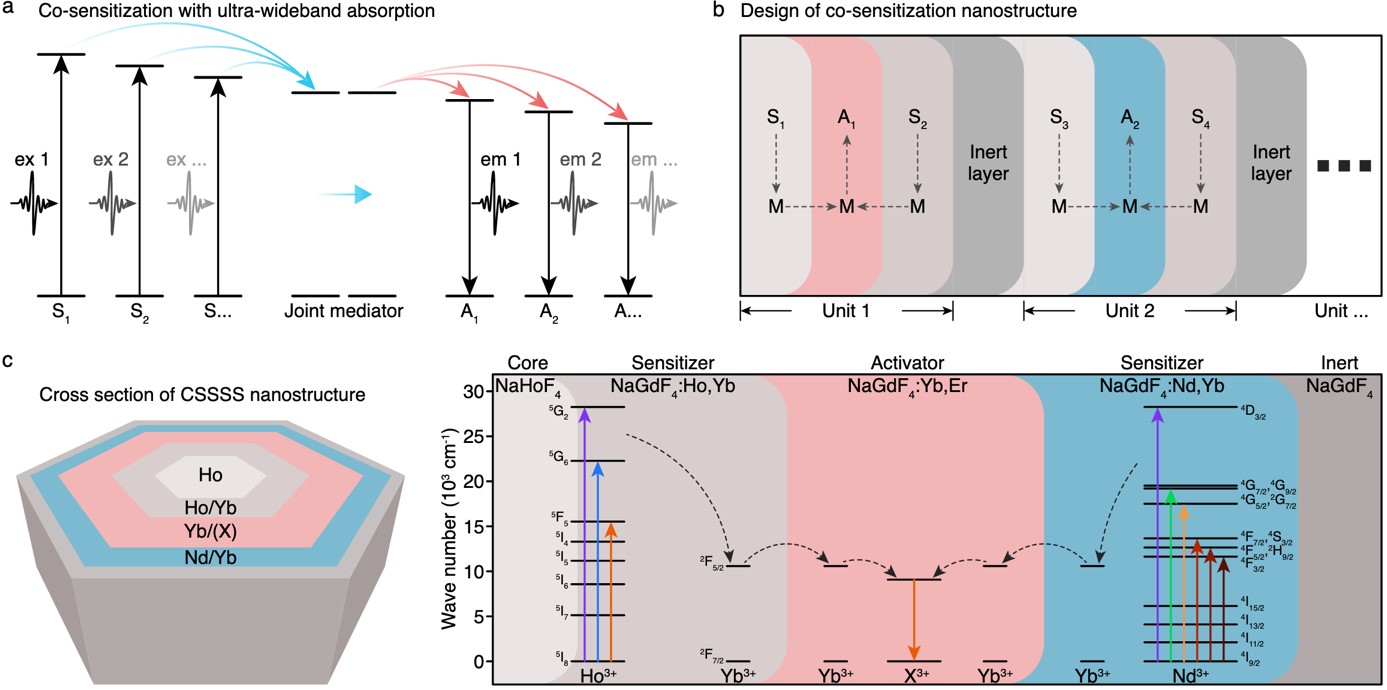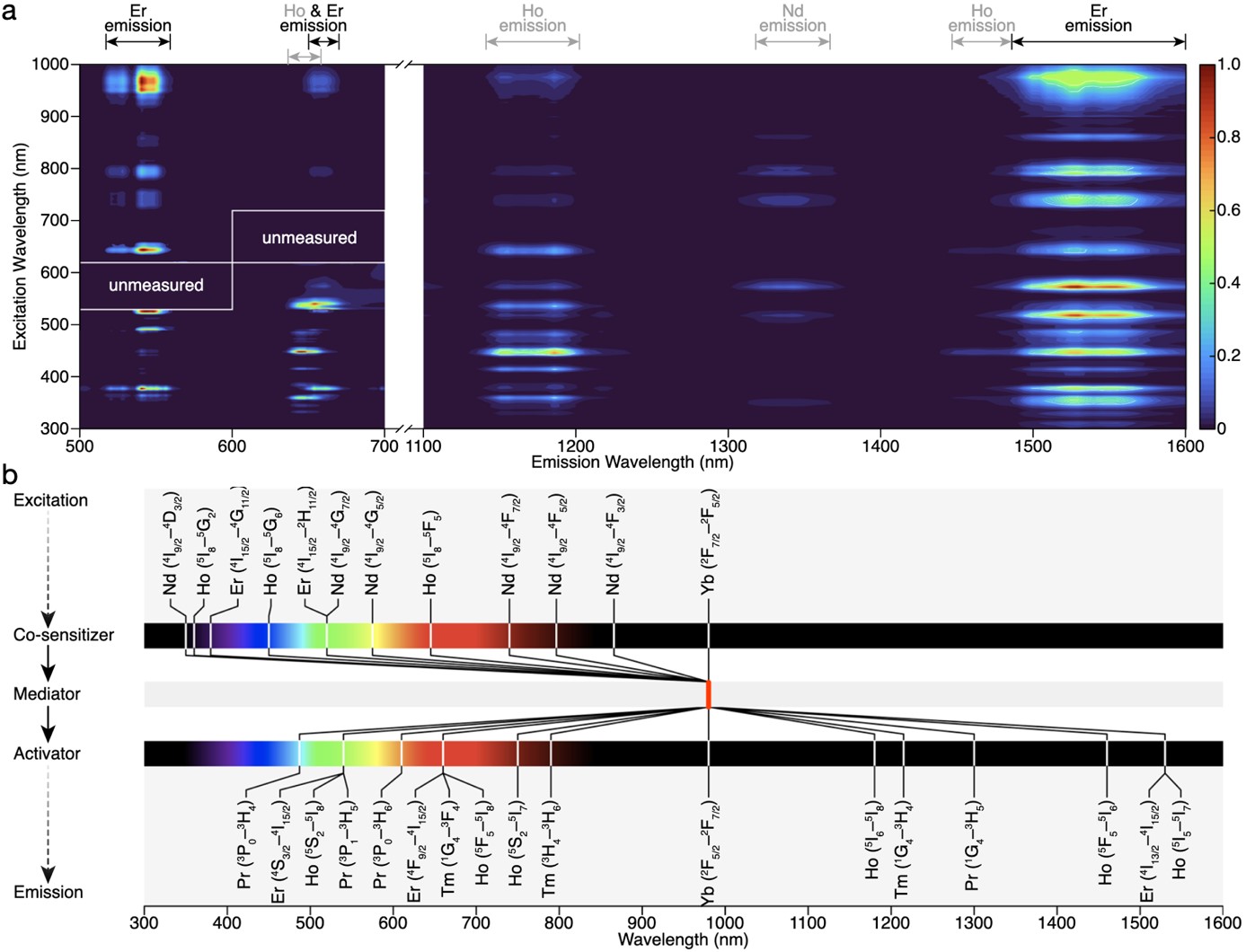Recently, Nature Communications published online the research paper titled "Ultra-wideband-responsive photon conversion through co-sensitization in lanthanide nanocrystals" by the research team of Prof. Wanwan Li at the School of Materials Science and Engineering and Zhangjiang Institute for Advanced Study, Shanghai Jiao Tong University. This paper reported a strategy to achieve ultra-wideband-responsive photon conversion of lanthanide nanocrystals from UV to NIR using a multi-ion co-sensitization strategy.

Smart control of photon conversion in lanthanide nanocrystals (LnNCs) is an important topic owing to its valuable scientific and technological implications on bioimaging, cancer treatment, optical sensing, information storage and security, and so on. However, the intrinsic parity-forbidden 4f-4f electronic transition of Ln3+ leads to ultralow molar extinction coefficients <10 cm−1 M−1 with linear absorption behaviors. Hence costly high-energy lasers at specific wavelengths are required for the excitation of LnNCs.

Figure 1. Schematic illustration of co-sensitization strategy and design of symmetric multilayer core-shell structure.
Sensitization has been demonstrated to be highly efficient in tuning the absorption and photon conversion behaviors of LnNCs, and currently reported strategies including Ln3+-Ln3+ sensitization, transition metal sensitization, semiconductor-matrix sensitization, dye sensitization, and multicomponent nanostructure sensitization. Inspired by this, this study proposes a multi-ion co-sensitization strategy to achieve ultra-wideband absorption and photonic conversion modulation. After screening of energy transfer between lanthanide ions, this study used Ho3+ and Nd3++ as co-sensitizers (S), Yb3+ as energy transfer medium (M), and multiple lanthanide ions (Er3+, Ho3+, Pr3+, Tm3+) as activators (A) to construct a directed energy transfer path from S-M-A and realized the directional energy transport from multiple sensitizers to the activator (Figure 1).
Specifically, the prepared lanthanide nanocrystals can effectively respond to UV-NIR light (350-1000 nm) and produce multi-directional photon conversion from blue-NIR light (450-1600 nm) (Figure 2). Using the ultra-wideband response property and intense NIR luminescence of this nanocrystal, this study carried out two applications (Figure 3).
(1) White-light-excited whole-body angiography of mice. Using a common white LED as the pump source, an angiographic effect comparable to NIR laser pumping was achieved with a signal-to-noise ratio as high as 12.3.
(2) WLED-responsive multiplex encryption. The security ink was prepared using the LnNCs for inkjet print of confidential information. Then a photochromic film was made to modulate the excitation to realize multiplex information encryption and decryption.

Figure 2. Ultra-wideband-responsive photon conversion of lanthanide nanocrystals.

Figure 3. Lanthanide nanocrystals for in vivo angiography and multiplex encryption.
The developed nanocrystals can act as multifunctional energy (wavelength) converters, which are expected to convert chemiluminescence, bioluminescence or other types of excitation energies to NIR fluorescence for real-time high-resolution imaging and open up possible new avenues for NIR fluorescence surgical navigation using common white light as the illumination source. Meanwhile, these findings demonstrate the giant tunability of lanthanide luminescence and provide a reference for nanostructures to modulate the luminescence behavior.
The PhD student Zhao Jiang at the School of Materials Science and Engineering, Shanghai Jiao Tong University, is the first author of the paper, and Professor Wanwan Li and Assistant Professor Xujiang Yu are co-corresponding authors of the paper, and the work was supported by Professor Huibin Qiu from the School of Chemistry and Chemical Engineering, Shanghai Jiao Tong University, and Professor Xiaoyuan Chen from the National University of Singapore. This work was financially supported by National Natural Science Foundation of China (Project No. 81971704), the National Key Research and Development Program of China (Project No. 2017YFA0205304), and Translational Medicine Research Fund of National Facility for Translational Medicine (Shanghai) (Project No. TMSK-2021-117).
Link: https://doi.org/10.1038/s41467-023-36510-3
